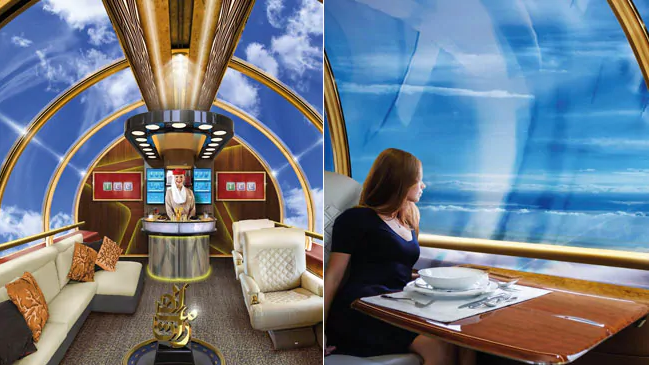They’ve been the subject of April Fool’s jokes and of real-life futuristic visions of everyday aviation. But could glass ceilings (and walls and floors) ever really happen on planes in the not-too-distant future?
As things stand right now? Probably not. Here’s why:
Weight
Regular glass as we know it is entirely too heavy. The goal of airlines is to make planes as light as possible (here are some of the crazy ways they’ve decreased weight on planes), to help decrease fuel costs. The more glass that’s used means the heavier the plane would be, which would mean it’d be significantly less energy efficient.
It’s too breakable
Glass can chip. And crack. And break. Even the smallest chip or crack would mean an area of decreased integrity and the last thing we want is for a plane to fall apart in mid-air. Sure, there are some forms of glass (or rather glass composites) that are less brittle. But of the materials we currently have available, none of them are as sturdy as the variety of metals and plastics that planes are currently made of.
The planes’ “innards”
We can’t see it because it’s covered, but between a plane’s outer skin and what we see on the inside are the electrical and air ventilation systems. Wires, pipes and cables all have to go somewhere. Plus who’s willing to give up the all-important overhead compartments just to get a better view of the sky?
What we might see instead
An alternative option that some high tech companies are exploring is converting a plane’s inner skin to a screen, so passengers could see the outside, but in video form. The Guardian wrote about it way back in 2014, and it’s an interesting concept if they can get it to work.
A few years later, in 2018, Lonely Planet reported on the Airlander 10. It was a concept of, “an airbus that resembled a luxury, superyacht.” Looking similar to a blimp, with wide expanses of windows in the passenger areas, the air vehicle would be meant for, “luxury expeditionary tourism” for up to 19 passengers.
Perhaps some sort of clear walls for commercial airlines will be possible and practical in the future. After all, who knows what sort of materials we may have 20 ,50 or 100 years from now? But for now, not so much.
Feature Photos: Emirates
Want to comment on this post? Great! Read this first to help ensure it gets approved.
Like this post? Please share it! We have plenty more just like it and would love it if you decided to hang around and get emailed notifications of when we post. Or maybe you’d like to join our Facebook group – we have 15,000+ members and we talk and ask questions about travel (including Disney parks), creative ways to earn frequent flyer miles and hotel points, how to save money on or for your trips, get access to travel articles you may not see otherwise, etc. Whether you’ve read our posts before or this is the first time you’re stopping by, we’re really glad you’re here and hope you come back to visit again!
This post first appeared on Your Mileage May Vary
Join our mailing list to receive the latest news and updates from our team.

